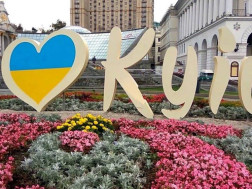The impact brought by the Omicron variant has harmed the European tourism sector at the end of the fourth quarter of 2021, thus hindering its recovery, the European Travel Commission (ETC) asserts in a new report named “European Tourism Trends and Prospects”.
The ETC predicts that tourist arrivals will be only 20 per cent below pre-pandemic levels in 2022.
In addition, the latest edition of the quarterly report “European Tourism Trends and Prospects” by ETC continues to monitor the impact of COVID-19 on the sector, SchengenVisaInfo.com reports.
ETC President Luís Araújo, commenting on the publication of the report, said that the report clearly shows the stifling impact of the uncertainty caused by Omicron, adding that ETC is optimistic that the European travel sector will overcome Omicron and many other challenges in 2022.
“However, the sector’s resilience is contingent on the EU being proactive in the development of endemic strategies that will allow for the loosening of travel restrictions for intra-European and international travel alike. As we learn to live with COVID-19, governments across Europe have to strike the right balance between managing health risks and facilitating mobility,” he pointed out in this regard.
The use of the EU Digital Certificate for COVID-19 and the easing of travel restrictions in 2021 were the basic foundations for the revival of tourism.
According to ETC, during the Christmas period, many thousands of commercial flights were cancelled across Europe due to staff shortages. Although, airline losses reach 18.5 billion euros in 2021, resulting in 1.4-1.5 billion fewer passengers than in 2019.
Compared to the levels of 2019, the data so far show estimates of a decrease of 62 per cent of tourist arrivals in Europe in 2021.
The ETC has noted that European destinations are recovering at different rates, for example, the mildest declines based on December data were Croatia with -37 per cent, France with -39 per cent, and Monaco with -40 per cent.
Similarly, Finland experienced significant declines with -80 per cent and central or eastern destinations such as the Czech Republic with -81 per cent, Latvia with -78 per cent, Estonia with -77 per cent, Slovakia with -76 per cent, and Lithuania with -74 per cent.
In 2022 travel demand is projected to be 20 per cent below pre-pandemic levels.
“Whereas domestic travel is expected to exceed pre-pandemic peaks in 2022, international travel will be slower on the uptake and is not likely to fully recover until 2024,” the statement reads.
Extremely positive development took place during the fourth quarter of 2021 when the resumption of travel between Europe and the United States began, which began in November 2021 and may help in the recovery of European tourism in 2022.
The ETC also stressed that they are hoping that part of European travel from the US will return to pre-pandemic levels.
















